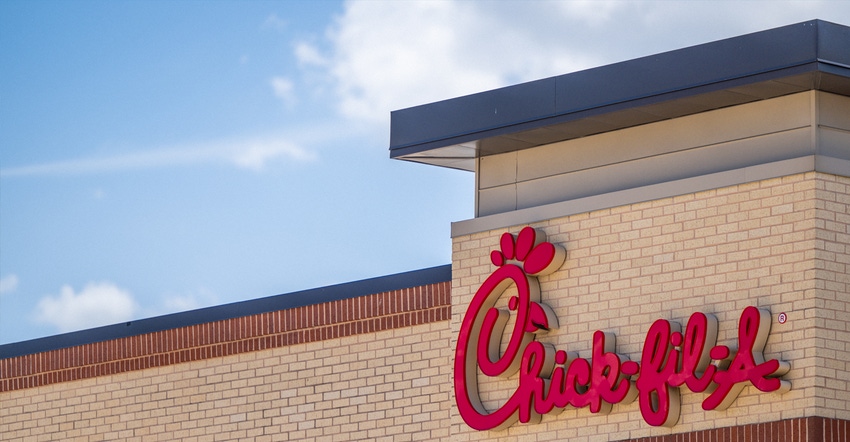Georgia-based fast food operator Chick-fil-A recently reached 15 million meals donated since the inception of its Shared Table program that works to divert food waste and serve local communities. Since the program launched in 2012, Shared Table has fought good insecurity across the U.S. and Canada, donating more than 3 million meals in 2022 as of publication. a broader sustainability goal for Chick-fil-A, which is looking to divert 25 million pounds of food waste from landfills by 2025 through programs such as Chick-fil-A Shared Table, composting and other efforts.

Georgia-based fast food chain Chick-fil-A recently reached 15 million meals donated since the inception of its Shared Table program that works to divert food waste and serve local communities.
Since the program launched in 2012, Shared Table has fought good insecurity across the U.S. and Canada, donating more than 3 million meals in 2022 as of publication. a broader sustainability goal for Chick-fil-A, which is looking to divert 25 million pounds of food waste from landfills by 2025 through programs such as Chick-fil-A Shared Table, composting and other efforts.
Chick-fil-A has been partnering with the Food Donation Connection to being this goal to fruition. The company bridge the gap between Chick-fil-A Operators and local agencies like shelters, soup kitchens and charities. The collaboration has enabled Chick-fil-A to serve local communities across 1,400 of its restaurants in the United States and Canada.
Greg Patterson, operator of Chick-fil-A Portranco Road & Chick-fil-A Alamo Ranch Marketplace – San Antonio, shared his insight with Waste360 about his participating in the Shared Table program and the critical issue of food insecurity.
Waste360: What does food insecurity look like in the San Antonio community?
Patterson: Food insecurity is a critical issue in San Antonio, which means many people in our community do not know where their next meal is coming from. Most of us are fortunate to have the resources to acquire our meals, but there are thousands in our communities who face food insecurity every day.
Waste360: Why participate in this program as a restaurant operator?
Patterson: The Chick-fil-A Shared Table® program is a way to give back to those in need in our community and give our Team Members the opportunity to serve others. In addition to making sure that our surplus food is used to feed those in need, our team members also have the opportunity to serve the food to people in our community each month.
Waste360: As a restaurant operator, what have you observed as being a hands-on part of this program – any specific stories that demonstrate the impact? What opportunities does it provide for the restaurant in its interactions with the community?
Patterson: As an Operator, it’s rewarding to see how passionate our Team Members are about serving meals to our community members. It’s a much sought-after position within the restaurant, as the Team Members seem to get so much fulfillment out of the volunteering experience. As one Team Member told me recently, "Serving a meal to these folks makes my heart smile for weeks." That service mindset and community focus is such an integral part of who we are at Chick-fil-A.
Waste360: What has been the most rewarding part about being part of this program as a restaurant owner?
Patterson: As a Chick-fil-A Operator, it’s incredibly rewarding to know that my team and I can demonstrate care to so many people in our local community. Through the Chick-fil-A Shared Table program, we see the tangible impact of this program firsthand.
Waste360: How does the surplus food program work?
Patterson: Having surplus food is almost inevitable in the restaurant industry. At Chick-fil-A, we recognize that hunger is an issue that many communities face, which is why we work hard to make sure that instead of having excess food go into a landfill, it is being used to fight food insecurity and help feed those in need. Three times per week, our local nonprofit partner stops by to pick our food up, and then uses it in various recipes to feed those in need. As an example, a nonprofit could use our chicken filets to prepare chicken parmesan. My two restaurants have been a part of creating 52,000 meals through Chick-fil-A Shared Table.
Waste360: How has food insecurity changed since the start of the program in 2012?
Patterson: I have observed how food insecurity has grown in the community over the last 10 years. As our partner Haven for Hope's request grows, local Chick-fil-A Operators continue to step up to the plate. In addition to Shared Table, we also donate packaged meals monthly to Haven for Hope. In 2012, we provided about 250 meals monthly and we now provide over 550 meals per month. In 2012, only about five San Antonio Chick-fil-A restaurants participated in Shared Table. This year, we have 22 Chick-fil-A restaurants participating and hope to have all 31 restaurants signed on by the end of the year.
Waste360: Have there been any challenges with scaling this program? How have these partnerships assisted with connecting everyone involved?
Patterson: Food Donation Connection and Second Harvest have been tremendous partners as we’ve worked to grow the impact of the Chick-fil-A Shared Table program in the U.S. and Canada. They have been instrumental in helping us identify and develop relationships with local charitable organizations that can help ensure that our food donations can be utilized to serve those in need in local communities. Because of the tremendous growth and success of this program, Chick-fil-A Shared Table recently achieved the milestone of donating more than 15 million meals since the program’s inception. That number makes me incredibly proud to be a part of this program.
Waste360: How do you see this program assisting with future food insecurity efforts?
Patterson: With the number of Chick-fil-A restaurants currently in San Antonio -- and the number of restaurants projected to open over the next 5-10 years -- we will continue to grow our impact as we continue to support our nonprofit partners and the communities they serve, ultimately reaching an even greater number of people as the need continues to grow.
About the Author(s)
You May Also Like




